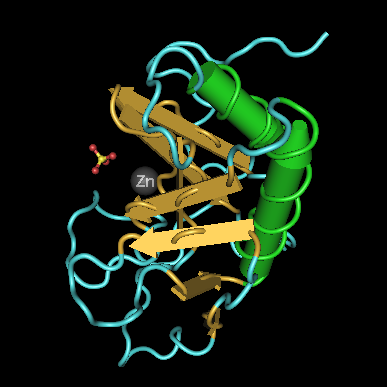The discovery of Shh was a major stepping-stone in the field of evolutionary developmental biology, a field that is concerned with how developmental processes on an embryonic level are tied into the big picture of evolution. Shh provided part of the answer to the question of how an entity as small as the embryo could inherently ‘know’ its orientation and consequently perform the incredible task of positioning the development of its body parts. It turns out that Shh plays an active part in the Zone of Polarizing Activity (ZPA), which determines the orientation of a developing limb bud. Shh forms a concentration gradient as it diffuses from the ZPA, and the levels of the morphogen (as well as several other components at play) determine digit formation. In short, it is why you have all five fingers, all in the correct spot.
Shh mutations in humans may cause holoprosencephaly, which is characterized by the failure of the brain to undergo complete division of the left and right hemispheres, cleft lip, and in severe cases, cyclopia. While studying this condition, researchers found that the chemical cyclopamine (named after the one-eyed sheep that had resulted from cyclopamine exposure) is an inhibitor of the Shh signaling pathway. Because it restricts growth, cyclopamine has been utilized as a tumor suppressor in several different cancers.
The article below highlights a very recent finding by scientists at the University of Texas M. D. Anderson Cancer Center, which sheds light on Sonic hedgehog gene variation, and how it has impacted our knowledge of medicine: in this case, cancer therapy.
Reference: University of Texas M. D. Anderson Cancer Center (2009, December 10). Sonic Hedgehog variations linked to recurrence, survival and response to therapy of bladder cancer. ScienceDaily. Retrieved January 30, 2010, from http://www.sciencedaily.com /releases/2009/12/091209114144.htm.
Image Credit: 3D structure of the signaling domain of the murine hedgehog protein. Wikipedia Commons. Available here.
Image Credit: 3D structure of the signaling domain of the murine hedgehog protein. Wikipedia Commons. Available here.
Linda Le is a contributing writer on biomedical research to TuftScope for Spring 2010.




